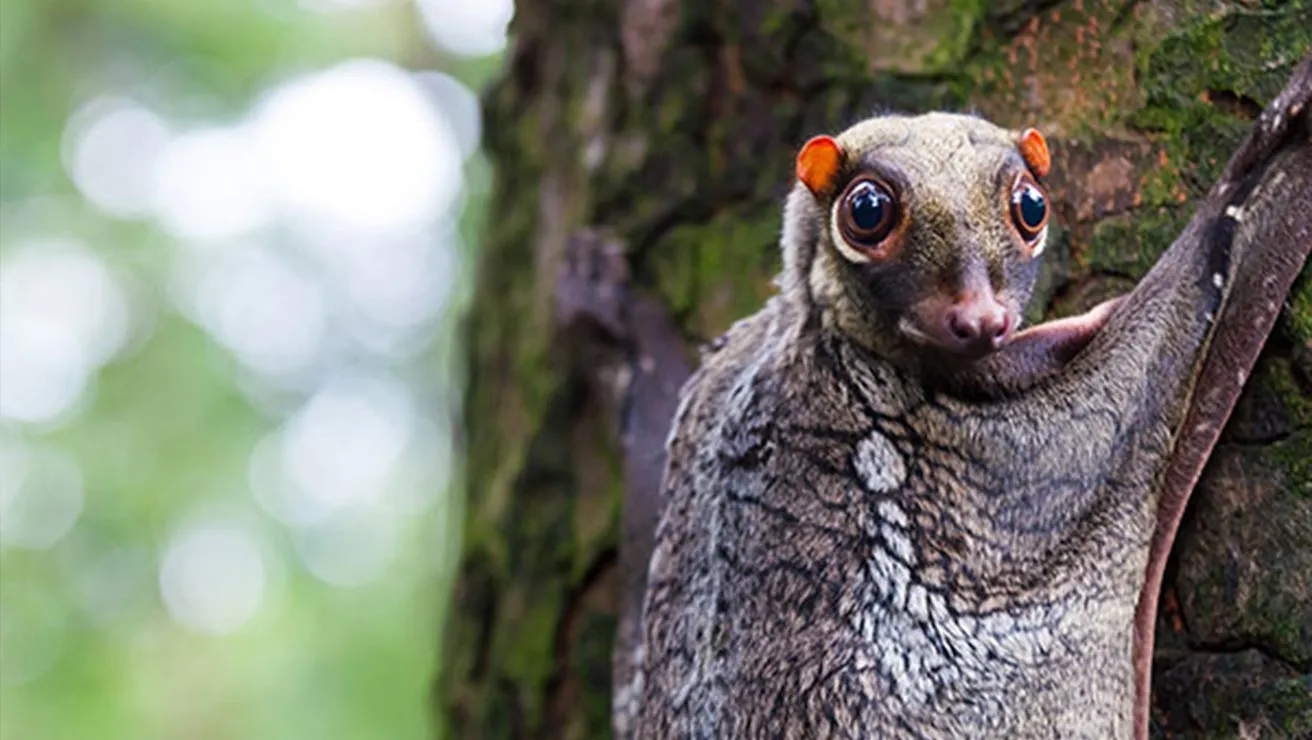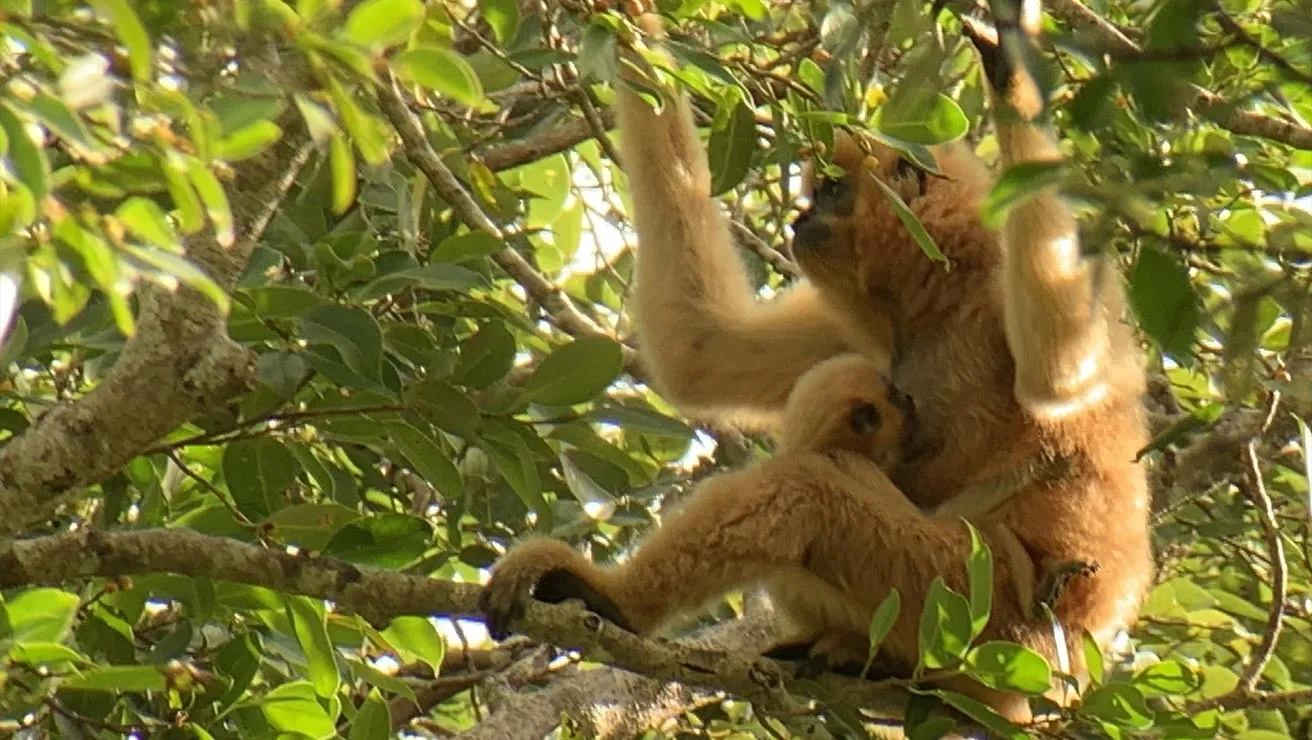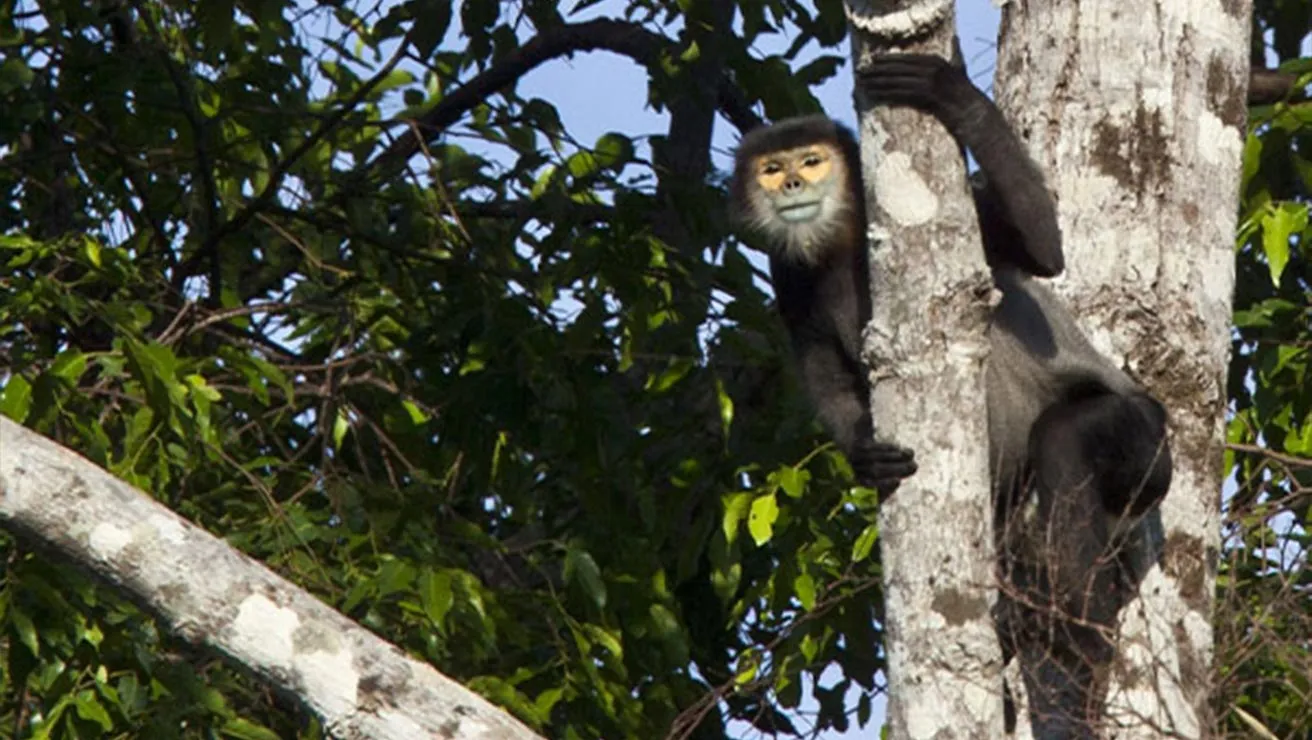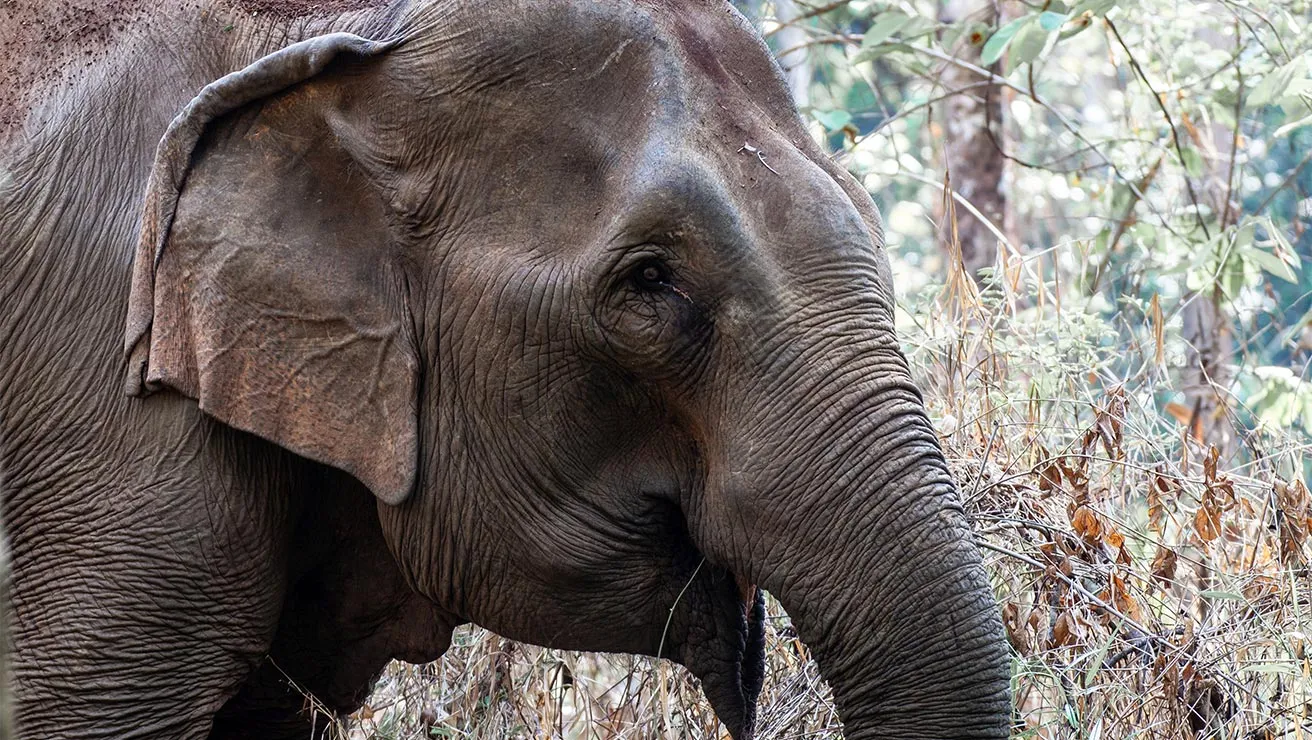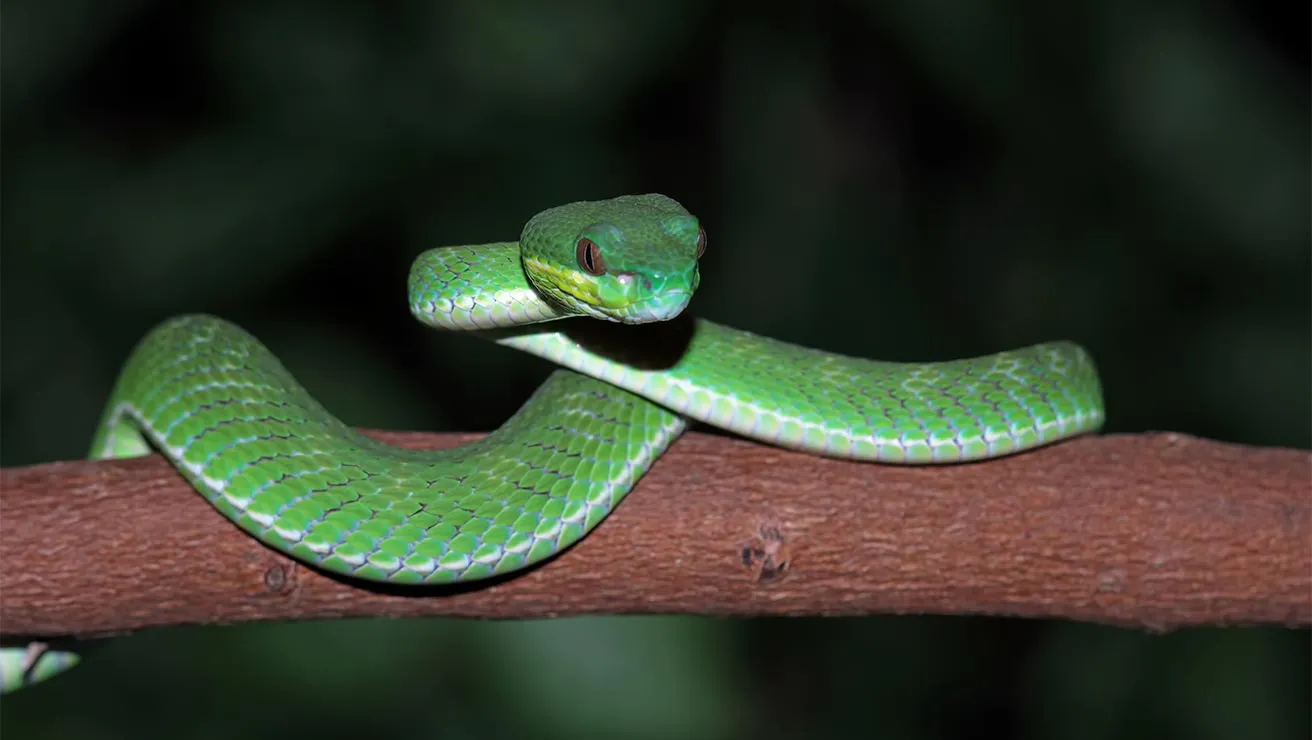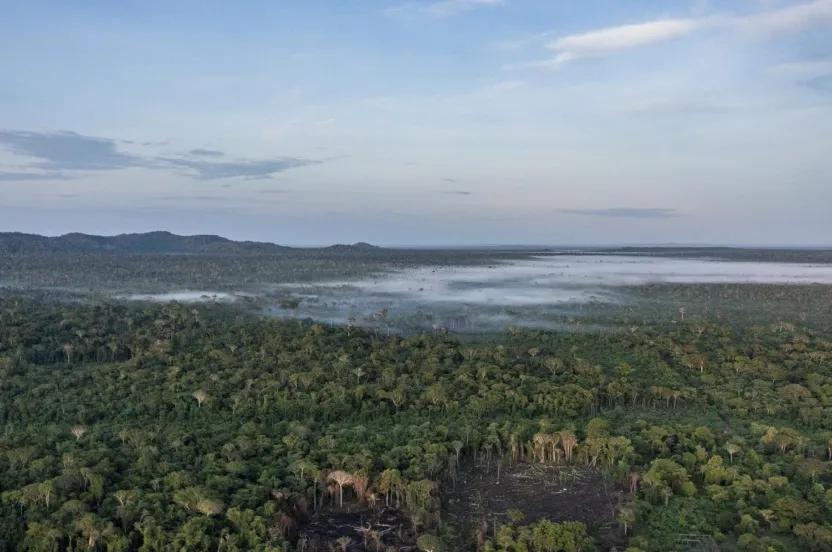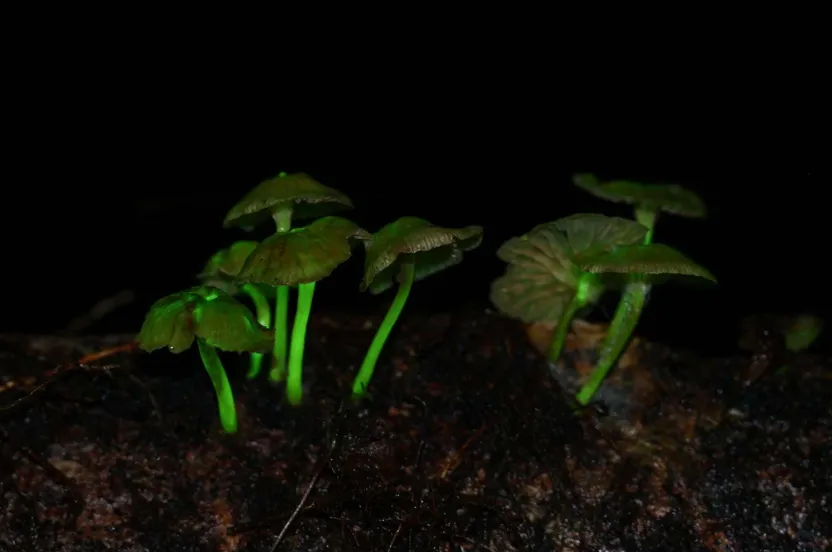Now live: The 2025 Canopy Report. Learn how Americans see trees. GET THE REPORT
Meet the Rare and Wonderful Animals of Keo Seima Wildlife Sanctuary
Protected forests are ensuring a future for Cambodia’s wildlife.
November 6, 2023
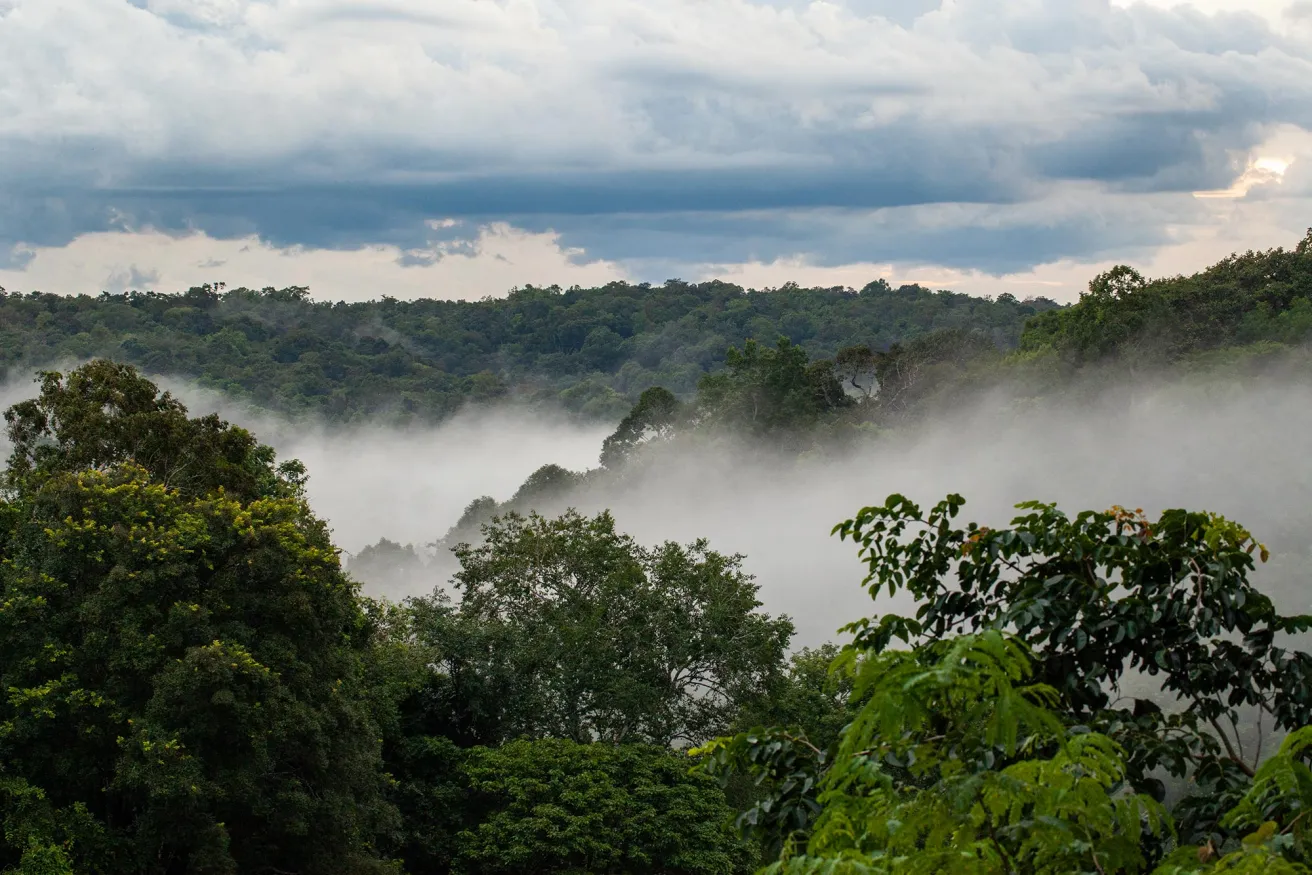
On a calm, quiet morning, you’ll hear it. The call of the southern yellow-cheeked crested gibbon. It’s an enchanting sound that echoes across the forest — often heard as a duet with its mate.
Unlike most primates, this gibbon adds an undulating, almost whale-like sound to the melody of the forest. And this call is what lures visitors out to Cambodia’s Keo Seima Wildlife Sanctuary at sunrise, just for the privilege of hearing it.
Like so many of the animals at the sanctuary, southern yellow-cheeked gibbons rely on trees for their survival.
A Diverse Landscape within a Protected Oasis
The Keo Seima Wildlife Sanctuary stretches across nearly 300,000 hectares and is home to the Bunong, an indigenous group with a deep ancestral tie to the land. Partly thanks to its size — it’s larger than the entire country of Costa Rica — the sanctuary features a biodiverse mix of forest habitats. “We have open, dry forests with a grassy understory and an open canopy,” said Olly Griffin, Forest Carbon Technical Advisor with the Wildlife Conservation Society (WCS) Cambodia Program. “And further east we have more of a closed, dense, moist tropical forest like you would imagine. That variation is one of the contributing factors to why we have such high biodiversity.”
Diverse is definitely a good description. This preserved region includes nearly 1,000 different animal, plant, and fungi species. Approximately 85 threatened species can be found here, thriving among the protected tree canopy. Here are just a few of them.
Meet the Rare and Wonderful Animals
Diverse is definitely a good description. This preserved region includes nearly 1,000 different animal, plant, and fungi species. Approximately 85 threatened species can be found here, thriving among the protected tree canopy. Here are just a few of them.
Scientific Name: Galeopterus variegatus Natural Range: Southeast Asia Status: Least Concern
This nocturnal glider thrives high in the dense tree canopy of tropical forests. It can glide up to 200 feet between trees thanks to large stretches of skin connecting arms, legs, and tail. “Colugos are very evolutionarily distinct. I would describe it as a mix between a carpet, a flying squirrel, and a weird shrew,” said Cain Agger, Biodiversity Monitoring Technical Advisor with WCS. While they are not endangered, populations are declining. Deforestation is a real threat to their survival. (Fun fact: A group of colugos is called a conspiracy.)
Scientific Name: Nomascus gabriellae Natural Range: Cambodia and Vietnam Status: Endangered
These primates are rarely seen anywhere but in the treetops, and they’re known for their beautiful call. “The males and females sing a harmony or duet in the mornings — partly as pair bonding, partly as a territorial display — and it sounds incredible,” said Griffin. As their name suggests, southern yellow-cheeked crested gibbons have patches of yellow fur on their cheeks. Adult males are almost entirely black, other than this key trait. Adult females, however, are nearly all yellow with a black crest on their heads. These gibbons have a place on the endangered species list because of loss of habitat, hunting, and the exotic pet market.
Scientific Name: Pygathrix nigripes Natural Range: Cambodia and Southern Vietnam Status: Endangered
With its blue-colored face, grey body, black hind limbs, and white tail, the black-shanked douc is a peculiar-looking monkey. It is almost exclusively found in Cambodia, mostly within the borders of the Keo Seima Wildlife Sanctuary. “You rarely find it anywhere else, and the populations outside Keo Seima are very, very small,” said Agger. This is one of three species of douc langurs, and its diet comes primarily from trees: leaves, shoots, buds, seeds, flowers, and unripe fruit. It also spends most of its time among the branches. Needless to say, deforestation is threatening its existence.
Scientific Name: Elephas maximus Natural Range: India and Southeast Asia (though it used to be a much broader area) Status: Endangered
The largest land animal in Asia can be found in the sanctuary, typically near a water source. “About one-quarter of Cambodia’s remaining wild Asian elephant population is in Keo Seima,” said Griffin. Asian elephants are social mammals and form complex relationships within a herd. These giant herbivores primarily eat grasses, but they also enjoy the trees’ bounty of fruit, leaves, roots, twigs, shoots, and bark. They have been known to get into crop fields and help themselves to sugar cane and cashew fruit as well.
Scientific Name: Cryptelytrops rubeus Natural Range: Eastern Cambodia and Southern Vietnam Status: Vulnerable
This venomous snake was first identified as a unique species in 2011, right inside the sanctuary. Vibrant, almost neon green scales and red eyes are its boldest features. Venomous fangs are its deadliest. “It is scary, but it is also very beautiful,” said Agger. These pit vipers are often found in dense cover near flowing water within a seasonal tropical forest habitat.
Building a Sustainable Future Together
Caring for this special place takes a lot of cooperation. The Cambodian government, WCS, other nonprofit organizations like the Arbor Day Foundation, and Bunong communities are working together to protect and nurture the forests of Keo Seima Wildlife Sanctuary. And those efforts are ensuring a future for these and many more amazing animals.
The American Southeast in Focus
We plant trees around the world, but focus our efforts on key regions where trees can do the most good. In the American Southeast, we’re supporting efforts to restore longleaf pine and other native species at a massive scale. Since most of the land is privately owned, the Arbor Day Foundation is working with landowners and public entities alike to further reforestation efforts.
